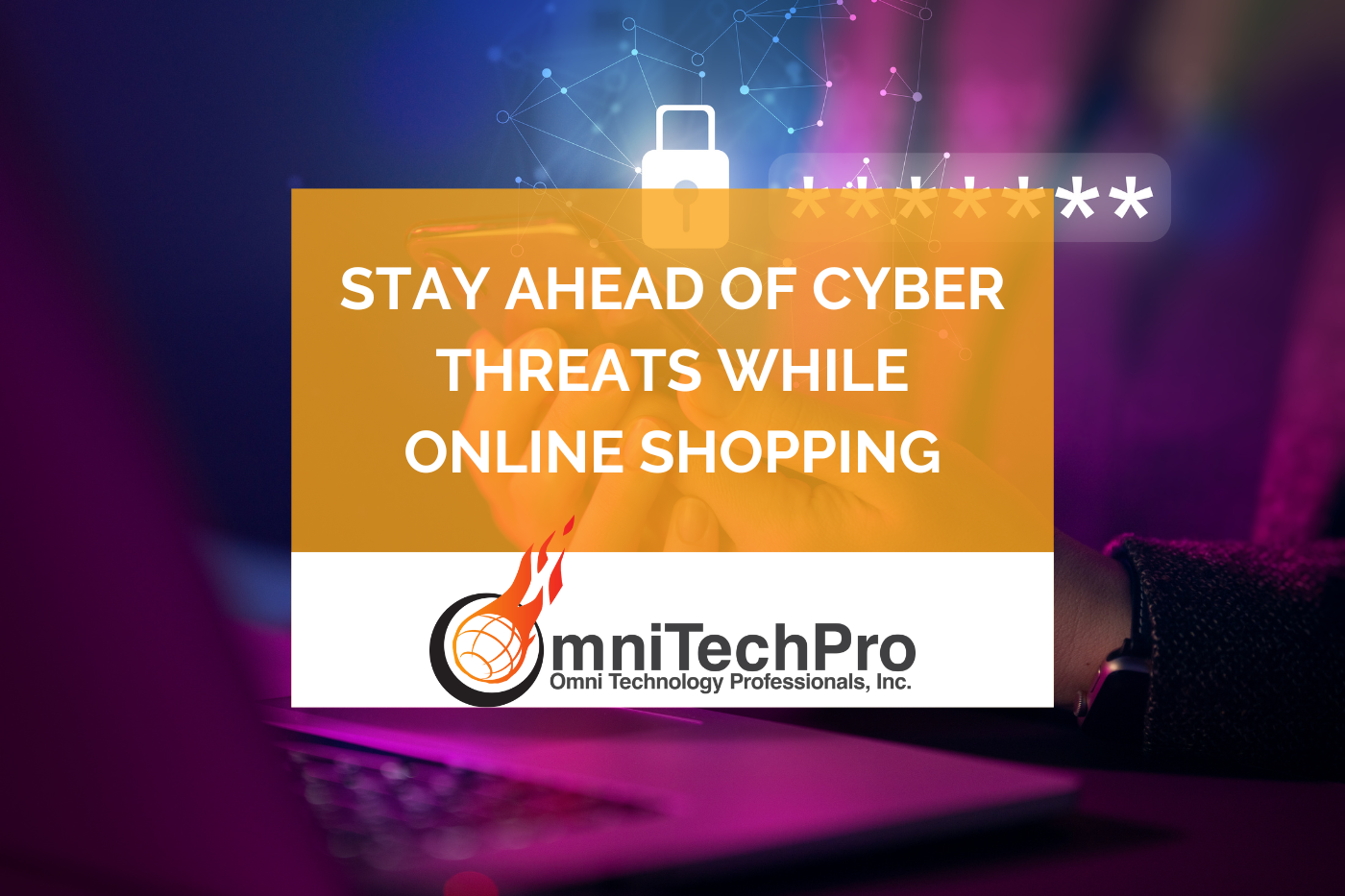In today’s digital age, online shopping has revolutionized the way we purchase goods and services. However, the convenience of this modern practice also exposes us to the ever-present threat of cybercrime.
Cyber threats, such as identity theft and financial fraud, have become increasingly sophisticated, requiring us to be proactive in safeguarding our personal and financial information. This article aims to provide essential tips and strategies to help you stay ahead of these cyber threats while engaging in online shopping.
From keeping your software up to date to exercising caution with shipping communications and avoiding risky links, we will explore various measures you can take to enhance your online security.
By staying informed and implementing these precautions, you can enjoy a safe and secure online shopping experience.
Importance of Software Updates and MFA
We all have heard that regularly updating your software is crucial. It is for ensuring the security and protection of your online shopping experience. One important factor for staying safe online is the implementation of multi-factor authentication (MFA).
MFA adds an extra layer of security by requiring users to provide multiple forms of identification, such as a password and a unique code sent to a mobile device. This significantly reduces the risk of unauthorized access to your personal and financial information.
Verifying URLs for Safety
To ensure a secure online shopping experience, it is essential to diligently verify the authenticity of URLs before clicking on them. By checking SSL certificates and identifying phishing emails, you can protect yourself from potential cyber threats.
Here are two important steps to follow:
Check for the secure lock:
- Look for the padlock icon in the address bar, indicating a secure connection.
- Verify that the website’s URL starts with ‘https://’ instead of ‘http://’, indicating encryption of data transmission.
Identify phishing emails:
- Be cautious of emails requesting personal information, such as login credentials or credit card details.
- Pay attention to email addresses and be skeptical of any suspicious or unfamiliar senders.
Caution With Shipping Communications
When it comes to online shopping, exercising caution with shipping communications is crucial for protecting your personal and financial information. Shipping scams are a common tactic used by cybercriminals to exploit unsuspecting shoppers.
To avoid falling victim to these scams, it is important to be aware of red flags in shipping communications. Be cautious when receiving text messages, emails, or other shipping notifications, especially from unknown sources. Avoid clicking on links within these communications and instead, visit the official website directly to track your orders.
Scammers may send fake shipping confirmations to trick users into revealing personal information, so it is essential to verify your order status on trusted websites independently.
Risks of Clicking on Ads and Links
Exercising caution with shipping communications is crucial for protecting your personal and financial information, and this vigilance should extend to the risks associated with clicking on ads and links while online shopping. It’s important to be aware of the potential dangers that ads and links can pose to your cybersecurity.
Here are some key points to remember:
- Malware prevention:
- Clicking on malicious ads or links can lead to the installation of malware on your device.
- Malware can compromise your personal information and disrupt your online shopping experience.
- Phishing awareness:
- Scammers may use ads and links to trick you into revealing sensitive information, such as login credentials or credit card details.
- Be cautious of ads or links that promise unrealistic deals or discounts, as they may be phishing attempts.
Direct Access to Shopping Websites
Accessing shopping websites directly is crucial for maintaining a secure online shopping experience. It is important to avoid relying on external links or search engine results to access shopping platforms. By visiting trusted websites like Amazon.com or ebay.com directly, you reduce the chance of falling victim to scams and fraudulent copies of websites. Direct access ensures that you are interacting with the genuine website, eliminating the risk of interacting with malicious or fake websites.
Safe Online Payment Practices
To ensure a secure online shopping experience, it is essential to adopt safe online payment practices. Protecting credit card information is crucial to prevent unauthorized access and potential fraud. Here are some safe payment methods and practices to consider:
- Use reputable payment gateways: Opt for well-known and trusted payment gateways like PayPal, Stripe, or Apple Pay, which have robust security measures in place.
- Enable two-factor authentication: Add an extra layer of security to your online transactions by enabling two-factor authentication, requiring both a password and a unique verification code.
- Avoid saving payment information: Refrain from saving your credit card details on merchant websites or in your browser to minimize the risk of unauthorized access.
Using Strong and Unique Passwords
For a more secure online shopping experience, it is crucial to employ strong and unique passwords. Utilizing password managers can help users generate and store complex passwords securely. These managers also provide the convenience of automatically filling in login credentials, reducing the risk of password reuse.
Additionally, enabling multi-factor authentication adds an extra layer of security by requiring users to provide multiple forms of verification, such as a password and a unique code sent to their mobile device. This ensures that even if a password is compromised, unauthorized access is prevented.
Utilizing Two-Factor Authentication
Implementing Two-Factor Authentication enhances the security of online shopping. This authentication method adds an extra layer of protection by requiring users to provide two forms of identification before accessing their accounts. Here are the key reasons why Two-Factor Authentication is important:
- Enhanced Security: Two-Factor Authentication significantly reduces the risk of unauthorized access to your online shopping accounts. Even if someone manages to obtain your password, they would still need a second factor, such as a unique code sent to your mobile device, to gain access.
- Protection Against Password Vulnerabilities: Passwords can be easily compromised, especially if they are weak or reused across multiple accounts. Two-Factor Authentication helps mitigate this risk by adding an additional layer of security beyond the password.
Implementing Two-Factor Authentication, along with using password managers, ensures a robust security framework for online shopping, safeguarding your personal and financial information from cyber threats.
Being Cautious With Public Wi-Fi
When shopping online, it is essential to exercise caution with public Wi-Fi networks, as they are often targeted by cybercriminals seeking to exploit vulnerabilities in order to gain unauthorized access to personal and financial information.
Using public Wi-Fi exposes users to significant risks, including the interception of sensitive data by hackers. Cybercriminals can easily eavesdrop on unencrypted connections and capture personal information, such as login credentials or credit card details.
To protect personal information, it is advisable to avoid conducting sensitive transactions, such as online shopping, while connected to public Wi-Fi. Instead, use a secure network or a virtual private network (VPN) to encrypt your connection and ensure the confidentiality of your data.
Regularly Monitoring Your Financial Accounts
Monitoring your financial accounts regularly is essential for ensuring the security of your online shopping transactions. By keeping a close eye on your account activity, you can quickly detect any unauthorized transactions or suspicious activities. Here are two important steps to take in order to effectively monitor your financial accounts:
- Monitoring transaction history: Regularly review your transaction history to identify any discrepancies or unfamiliar transactions. Pay attention to small or unusual charges that may go unnoticed. If you spot any unauthorized activity, report it to your bank or credit card issuer immediately.
- Setting up account alerts: Take advantage of account alerts offered by your financial institution. These alerts can notify you of any changes in your account balance, large transactions, or unusual activity. By setting up alerts, you can proactively respond to any potential security threats and take appropriate action.




